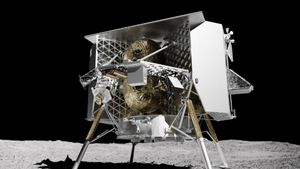JAKARTA The Artemis program, the astronaut's landing on the Moon, requires a lot of technological support, one of which is the use of cryogenics to ensure the function of propellants.
The propellant is urgently needed to drive the spacecraft. Therefore, the United States Aeronautics and Space Agency (NASA) is trying to keep the propellant cool in a liquid state through the cryogenic Liquid Management (CFM) project.
CFM is a fairly difficult project. NASA should ensure that propellant liquids are between minus 238 degrees Fahrenheit to minus 460 degrees Fahrenheit. Usually, this liquid contains liquid hydrogen, methane, and oxygen.
So far, most cryogenic fluids can only be stored for several hours in space. In fact, the Artemis mission takes quite a long time, could take weeks or months, depending on the difficulties faced.
Our future mission concept relies on large amounts of cryogenic fluids and we have to figure out how to use them efficiently over a long period of time, said CFM Deputy Portfolio Manager Lauren Ameen.
Another challenge NASA will face is the high level of propellant leaks. Basically, cryogenic liquids must remain fluid and cold, but traveling into space will make the plane enter and out of the sun.
SEE ALSO:
Sunlight and exhaust from the plane can make the liquid fail through the cryogenic process. As a result of this failure, fluids that are at normal or not cold temperatures will boil and experience evaporation due to their hot environment.
When the liquid evaporates, the fuel for the rocket engine will work inefficiently. When it reaches that point, the plane can experience the risk of a propellant leak or broken tank. This could endanger the astronauts.
The space plane will be in low gravity longer and will need to transfer liquid hydrogen to space for the first time. So, we have to reduce the occurrence of education and find innovative ways to transfer and measure cryogenic propellants, "explained Ameen.
As a mitigation measure, NASA has developed a Radio Frequency Mass Measur (RFMG) to measure cryogenic liquid more accurately. NASA also plans to develop a cryocooler to exchange heat in large propellant tanks.
NASA's last step is to develop a disbursement system to convert gas oxygen into liquid oxygen as long as the aircraft is on the lunar surface. This system will refuel using on-site propellants.
The English, Chinese, Japanese, Arabic, and French versions are automatically generated by the AI. So there may still be inaccuracies in translating, please always see Indonesian as our main language. (system supported by DigitalSiber.id)













